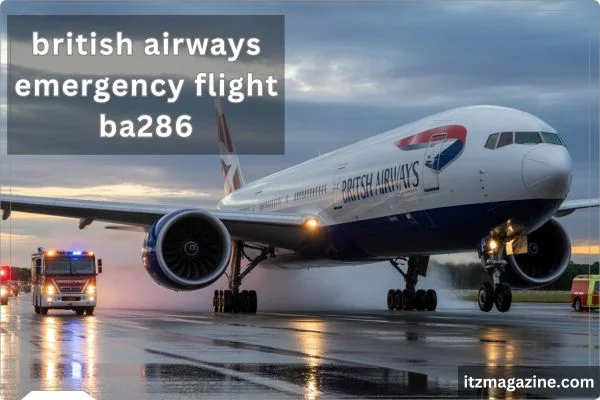Introduction
Flight BA286 of British Airways on its normal route between San Francisco international airport (SFO) and London Heathrow airport (LHR) was on 25 October 2016, when an in-flight emergency that was unknown to the crew caused the flight to be diverted to the Vancouver international airport (YVR) in Canada. This accident, which involved an Airbus A380, attracted the global media attention because of news that some of the members of the crew became ill during the flight.
Timeline of the Incident
It was scheduled to leave San Francisco with more or less 388 passengers and 25 members of the crew on board. During the flight over the Canadian airspace, not all members of the cabin crew started feeling ill and reported that they were sensing a powerful and nasty smell in the upper-deck galley.
At first, the flight crew had tried to divert to Calgary, but since that airport did not have the facilities to receive an Airbus A380, the diversion was decided to be made to Vancouver, which is well equipped to receive large planes.
The aircraft made the safe landing at the Vancouver International Airport where emergency services were on the alert. Crew members who were affected and found, after a medical examination, were treated and liberated. Noticeably, no passengers were greatly hurt and the incident ended without any complications.
What was the Diversion Triggering?
Diversion was called a medical emergency after the crew members suffered illness symptoms. Though at the beginning it was reported that there was smokes or fumes in the cabin, the source of the odor was not successfully traced to one thing.
The preliminary inspections after landing showed no active fire or mechanical problems but maintenance members conducted thorough inspections on the cabin air systems and galleys. Though it could not be considered a significant accident, the incident led to the inspection of in-flight air quality and health control of crew members that take place in the company.
Response and Passenger Care
After the diversion, British Airways even accommodated the passengers in the city of Vancouver and made other flights to London after the situation had stabilized. Aviation experts applauded the rapid response of the crew as it showed that it placed safety as a priority and acted proactively in uncertain circumstances.
Paramedics and airport fire crews were mobilized to the fullest as well to aid the arrival. Each of the 25 crew members was assessed, and some of them were treated with the symptoms typical of the light smoke or fume inhalation. Immediate communication between the flight crew, air traffic control and the ground responders made sure that the situation was contained in an efficient and safe manner.
Industry Significance
The british airways emergency flight ba286 accident underlines the importance of the airline emergency protocol and the training of the crew in keeping passengers safe. Even though there are fewer incidents of fume or strange smells in the cabin, they are extremely problematic to the flight crew because the origin of the issue is often hard to figure out as it happens.
Other aircraft that provide a challenge to emergency planning include large aircraft like Airbus A380. The selection of diversion points can only be done quickly and efficiently with limited airports that can accommodate a plane of such size. Vancouver has been the best choice in this scenario due to its facilities, long runway and emergency preparedness.
To the passengers, the incident was disturbing yet reassuring on how well such disasters are handled. The effective diversion and safe landing inspired trust in the safety in aviation standards and readiness to operate.
Unanswered Questions
Although it was widely covered in the media, the precise cause of the smell and sickness of the crew remained undisclosed in the public. Investigators could not determine that there was a mechanical defect or air-system malfunction but industry commentators have reported that it can be extremely challenging to determine the origin of cabin smells.
The extent to which the event resulted in a change in the overall procedure and technical aspects of British Airways permanently, is also not clear. Nonetheless, the repeated occurrence of similar incidents in the industry has led to continuous studies in the field of cabin air quality, filtration systems, and fume detection technology.
Key Takeaways
- Safety first: The diversion decision was correct and guaranteed the safety of all the board members.
- Crew preparedness: The pilots and cabin crew reacted to an untold health risk in a prompt manner thanks to the right training.
- Communication issues: It was important to coordinate the cockpit, air traffic control, and emergency services.
- Reassurance to the public: Although the incident caused doubts, it proved that the contemporary aviation safety systems are effective.
Conclusion
The British Airways Flight BA286 is a wake-up call that even a long-haul flight, as usual, might face unexpected and unforeseen difficulties. The competence of the crew and a quick reaction of the airline turned out to be the solution of avoiding a potentially dangerous situation and made it safe.
The exact cause of the in-flight smell is not identified, but the event highlights the value of always being on guard, well-trained, and decision-making in a safer way in the aviation industry. To passengers, it once again confirms to them that in cases of emergencies at 35,000 feet, preparedness, and professionalism are the best defense.



